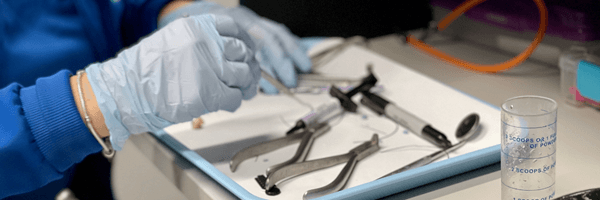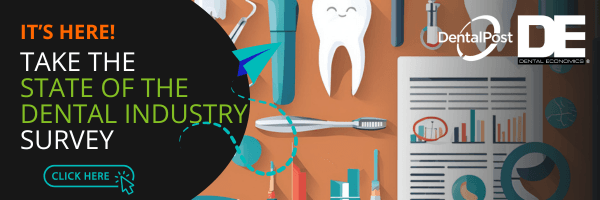
Expanded Function Dental Assistants & OPAs: Understanding the Emerging Roles in Dental Care
Posted June 20, 2025
As the dental workforce continues to evolve in response to provider shortages, access issues, and growing demand for preventive care, a number of states have introduced or expanded roles for dental assistants. These include Expanded Function Dental Assistants (EFDAs) and, most recently, Oral Preventive Assistants (OPAs), a new category officially recognized in Arizona in 2025. While these developments aim to support patient care, they’ve also sparked valid concerns, especially among dental hygienists—about regulation, training standards, and scope of practice.
Let’s explore what these roles entail, how they differ from dental hygiene, and what this means for the future of collaborative care.
What Is an EFDA or OPA?
EFDA roles vary by state but generally allow dental assistants to perform additional tasks—such as coronal polishing, taking impressions, removing cement from crowns, and in some states, placing restorations and administering local anesthesia—under supervision of a dentist and in many cases a dental hygienist as well. In many cases, these professionals are trained through state-specific, board-approved programs, some of which are accredited, while others are not.
The Oral Preventive Assistant (OPA), introduced in Arizona, is a newer preventive-focused model. OPAs are trained to provide basic hygiene services to patients who are periodontally healthy or exhibit only mild gingival inflammation. Their scope includes:
• Supragingival scaling
• Coronal polishing
• Fluoride application
• Oral hygiene instruction
• Visual assessment of gingival health (not probing or full charting)
To qualify, OPAs must complete a 120-hour training program after proving they hold certifications in radiology, coronal polishing, and CPR, and are either CODA graduates or DANB-certified.
How Does EFDA/OPA Education Compare to Dental Hygiene Education?
Below is a general chart overview of the educational and scope of practice differences between these professions.
| Category | EFDA / OPA (Varies by State) | Dental Hygienist |
|---|---|---|
| Training | 120–300 hours (varies by program/state) | 2–4 years (associate or bachelor’s Degree) |
| Credentialing | State certification specific certification. May or may not require additional examination. Board supervision limited if at all present | State licensure-oversight by the board of dentistry or board of dental hygiene (California) |
| Scope of Practice | Assist dental practice with restorative and/or preventive duties under supervision. In some states, place restorations and administer local anesthesia. | Full preventive and periodontal care, restorative functions in some states |
| Assessment Skills | Visual exam, basic charting, patient education | Full charting, probing, diagnosis, treatment planning |
| Supervision | Direct supervision usually required | Often general supervision in many states. May have independent practice in some states |
States with EFDA or OPA Models
Several states have developed EFDA models, each with unique scope and training requirements. States with active programs include:
• Minnesota
• Illinois
• Kansas
• Alaska
• Wisconsin
• Maryland
• Missouri
• Oregon
• Arizona (OPA model)
In Oregon, for example, EFDAs are trained in both restorative and preventive procedures, and many programs meet the highest educational standards—despite a lack of national accreditation requirements. Still, the variability between programs and the reliance of on-the-job training remain legitimate concerns, as does the lack of regulatory oversight regarding licensure/certification and continuing education requirements.
Pay Equity
As these roles for dental assistants evolve, questions about pay equity are rising. Many assistants argue that if their responsibilities shift toward more direct patient care, their compensation should reflect that.
Dental hygienists have concerns on both sides of the spectrum. Some worry that the growing role of the EFDA or OPA could lower hygienists’ pay, while others argue they should be compensated for supervisory responsibilities—especially when those duties are tied to their professional licensure.
Balancing the Benefits and Risks
These roles bring both promise and complexity to the dental profession. Here is a breakdown of both sides:
Potential Benefits:
• Improved Access to Care: In underserved or rural areas, expanded roles allow practices to reach more patients.
• Efficiency and Team-Based Care: Dentists and hygienists can focus on higher-level care while EFDAs/OPAs manage supportive tasks.
• Career Pathways for Assistants: These roles offer growth for assistants who may not pursue full hygiene degrees.Key Concerns:
• Inconsistent Educational Standards: Without CODA accreditation across the board, quality varies.
• Lack of Regulatory Oversight
• Pay Disparities: Will assistants who receive this training be paid more? Will these lower wages for dental hygienists?
• Patient Safety and Overlap: Inadequate training or supervision could lead to improper care or scope creep.
• Professional Tension: Hygienists—rightfully—worry that these roles blur the lines of clinical responsibility and quality patient care.
A Path Forward
As someone who teaches independent anesthesia certification courses for dental hygienists and dental assistants—and is also an educator for dental hygiene schools, I’ve seen firsthand how high-quality education and appropriate supervision can empower dental assistants to support preventive care without compromising safety or undermining hygiene’s role.
But I also understand the hesitation from many dental professionals—especially when oversight is inconsistent, or programs aren’t held to the same standards.
It’s time for collaborative dialogue, clear role definitions, and transparent training standards to ensure that patients, practitioners, and the profession all benefit from innovation—without sacrificing quality.
Final Thoughts
Expanded function roles like EFDAs and OPAs look like they are here to stay. These professions are shaped by workforce demands and access challenges across the country. The challenge now is ensuring that the education, scope, and supervision of these providers are up to the task—and that hygienists remain a vital, central part of the care team.
Let’s advocate for high standards across all roles and stay engaged in the policy decisions that will define the future of our profession.
We connect and educate more than 900,000 job seekers in the U.S. and Canada to build better places to work through teams that excel.






.png)


